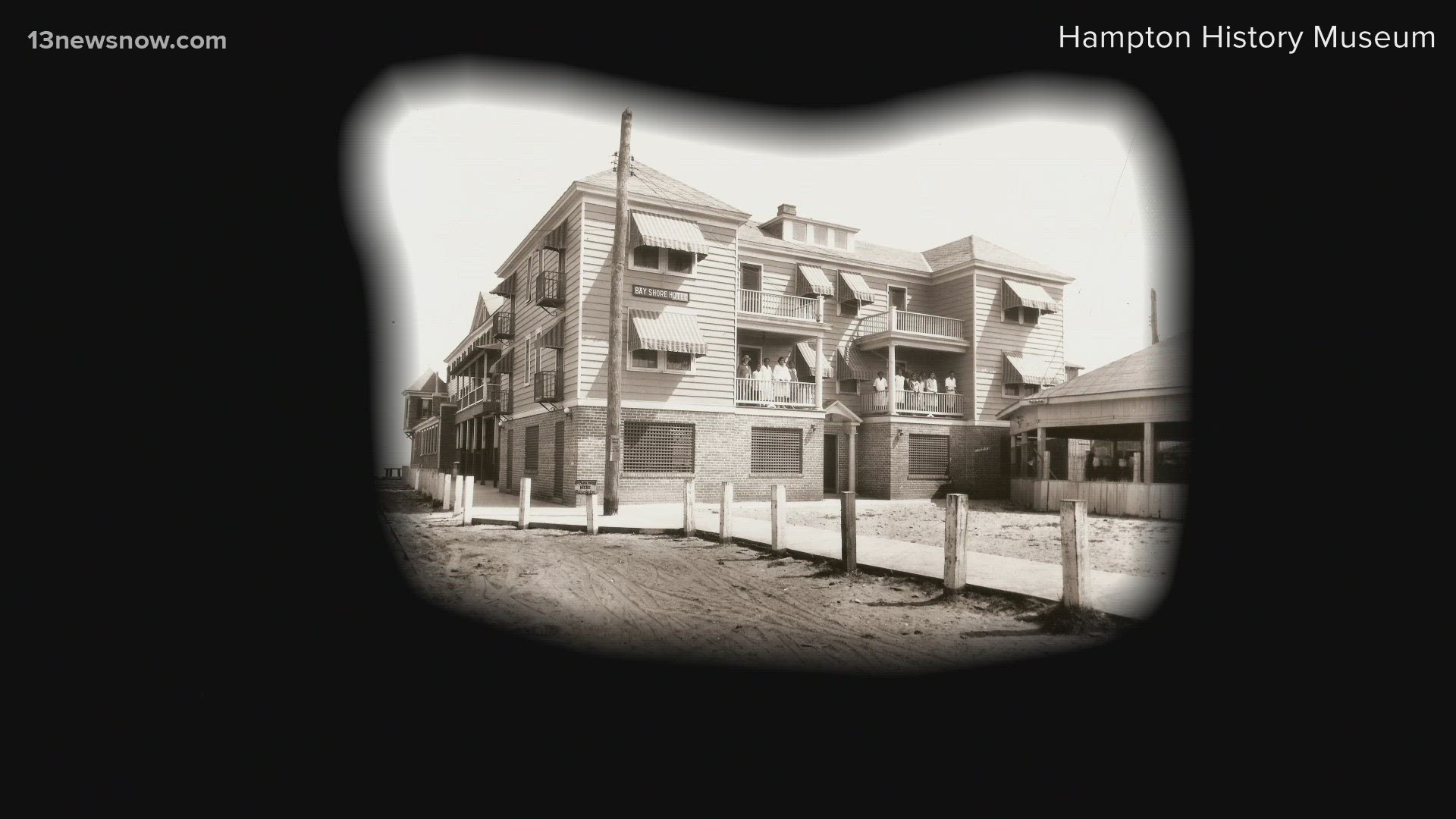HAMPTON, Va. — When history fades, it doesn't mean it's been forgotten.
It's quite the opposite for Helen Phillips Pitts, who remembers her weekend trips in Hampton fondly.
"I've been so emotional all week, I feel like I could cry at the drop of a hat," Helen Phillips Pitts said with a laugh, standing beside the fishing pier at Hampton's Buckroe Beach.
She still remembers the days growing up and visiting Hampton beaches but under a different name, when it was the Bay Shore Hotel at Bayshore Beach, a safe haven and resort built for African American travelers and vacationers.
"I was younger when most people were coming, I heard the stories and I couldn’t wait to grow up," she said.
In the late 1890's, a group of investors purchased the plot of land near what is current day Buckroe Beach that would eventually become the Bay Shore Hotel. It was also a frequently advertised entity published in Victor Hugo Green's "Green Book," the safe traveling motorist guide for African Americans in the mid-1900's.
According to Green Book cataloguing through the University of Virginia:
"...by 1925 the hotel had expanded to seventy rooms with an associated amusement park, pavilion, and pier. African-Americans flocked to this beachfront resort from several states away."
The hotel appeared more than a dozen times in the Green Book's roughly 30-year publication run.
Pitts' grandfather was among the original group of investors to the resort. And while she never knew him, that family history and heritage passed down through generations.
“That is my father’s father, and they never mentioned it to me. You talk about humble, it wasn’t a big deal to them, but it did become a big deal after integration," she said.
Thursday, a years-long legislative effort came full circle when the state's first ever Green Book historical marker was unveiled underneath the current Bay Shore Hotel highway marker.
The marker comes months after the passing of a bi-partisan backed bill that directed for funding to be allocated toward the creation of signs for Green Book sites both demolished and still standing. According to the UVA cataloguing, there are more than 300 identified Green Book sites in Virginia, with less than one-third of them still standing today.
“It served as an invitation for those who did not have one," Virginia Gov. Glenn Youngkin told the dozens of spectators at the marker unveiling.
“It ended in the 1970’s with the long overdue arrival of integration, but the resort that stood here for almost a century, did something amazing and noteworthy," Hampton Mayor Donnie Tuck said.
In the Tidewater region, there are more than 100 Green Book sites across the greater Hampton Roads area, from Gloucester County to Portsmouth and beyond. Previous 13News Now reporting compiled the status of those sites, and found roughly 85% of those sites named were either demolished or designated as an "unknown" status.
"For black Virginians, driving the roads and by-ways during Jim Crow it was a dangerous proposition. You didn't know if the hotel or gas station would serve you or threaten you," Del. Mike Mullin said, the chief co-patron on the legislation along with Del. Jeion Ward.
"It wasn't just a guide book, it was a life line," Del. Mullin added.
The process to identify and install a green book marker at each qualified site in Virginia could take years, according to officials with the Virginia Department of Historic Resources.
However, there are already two more planned for being unveiled: Miller's and Eggleston Hotels in Richmond and Yancey House and Grasty Library in Danville.

